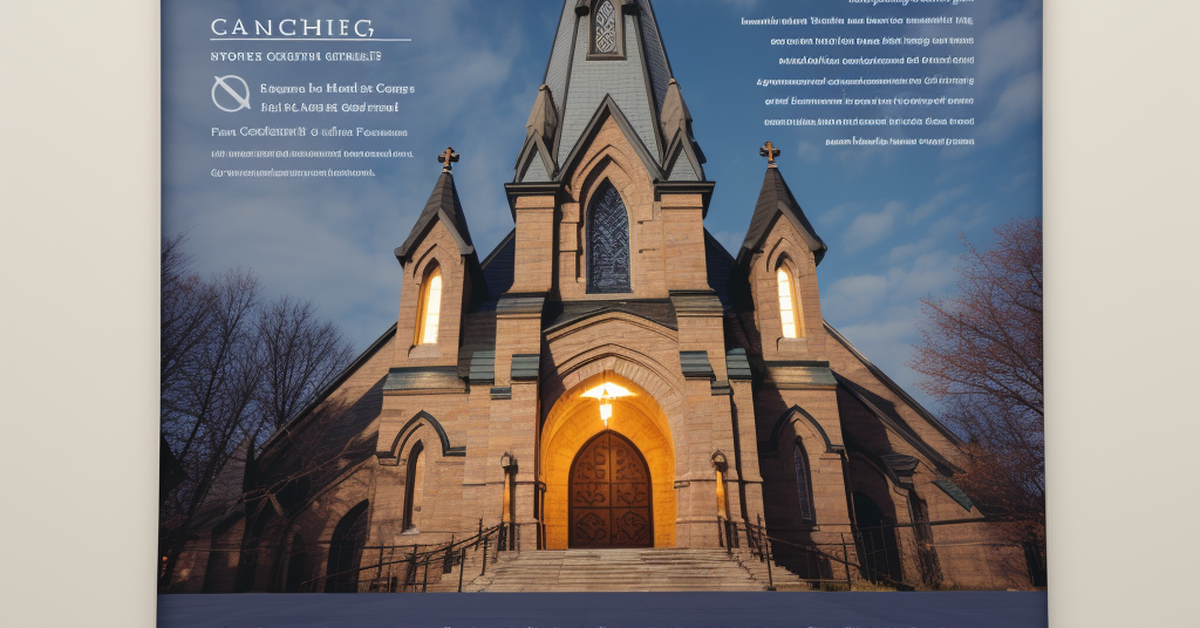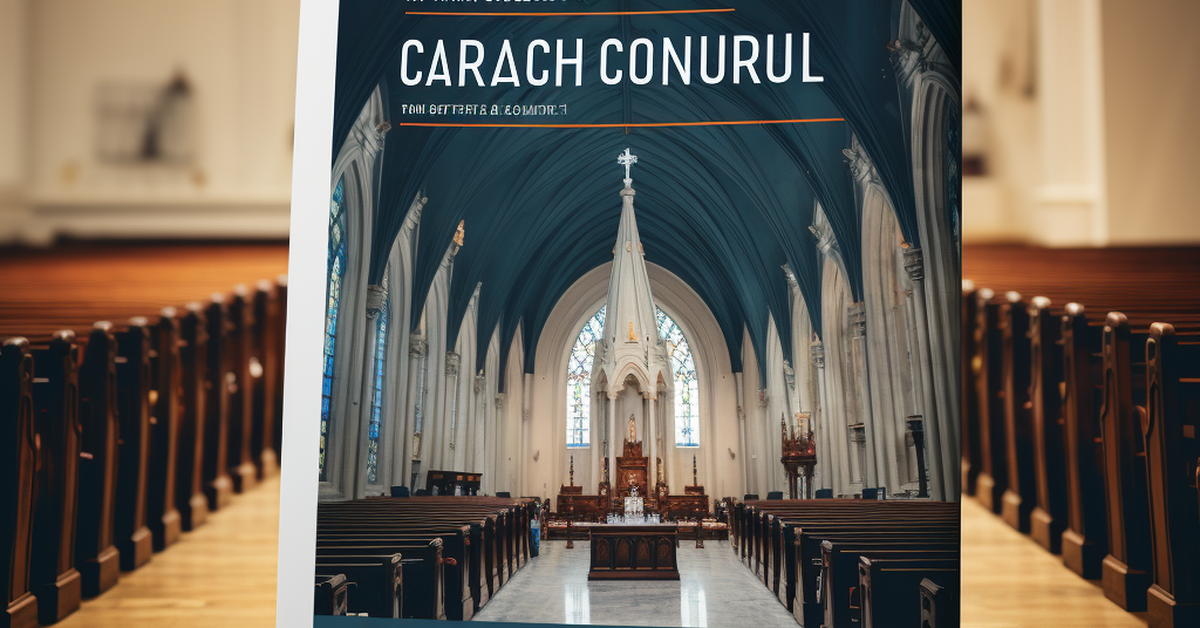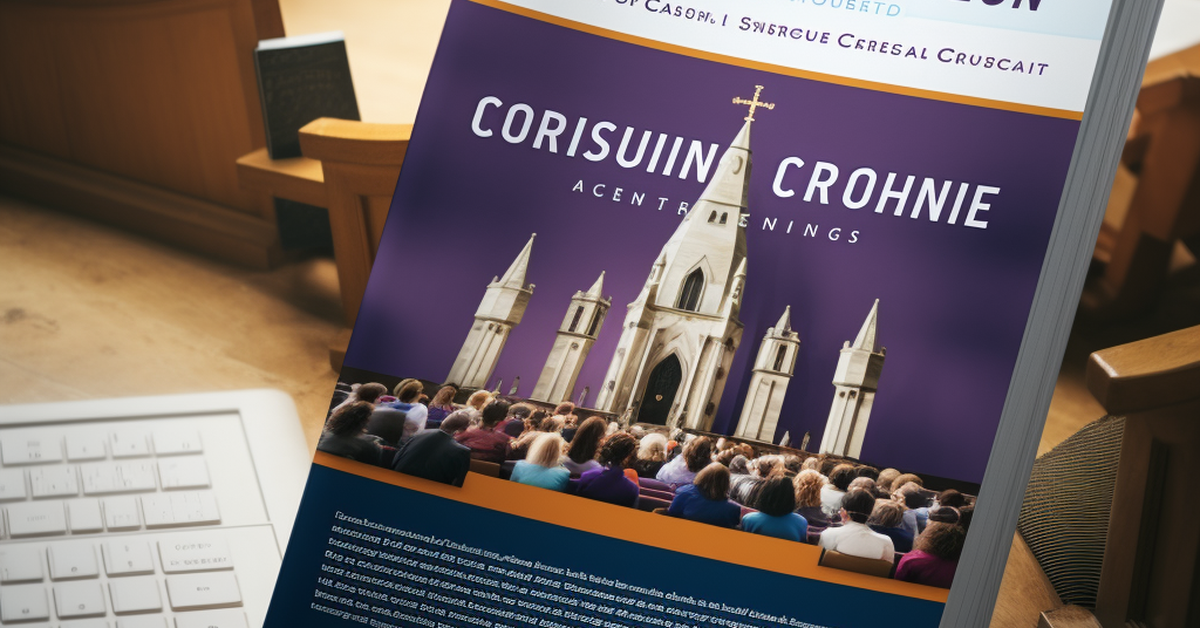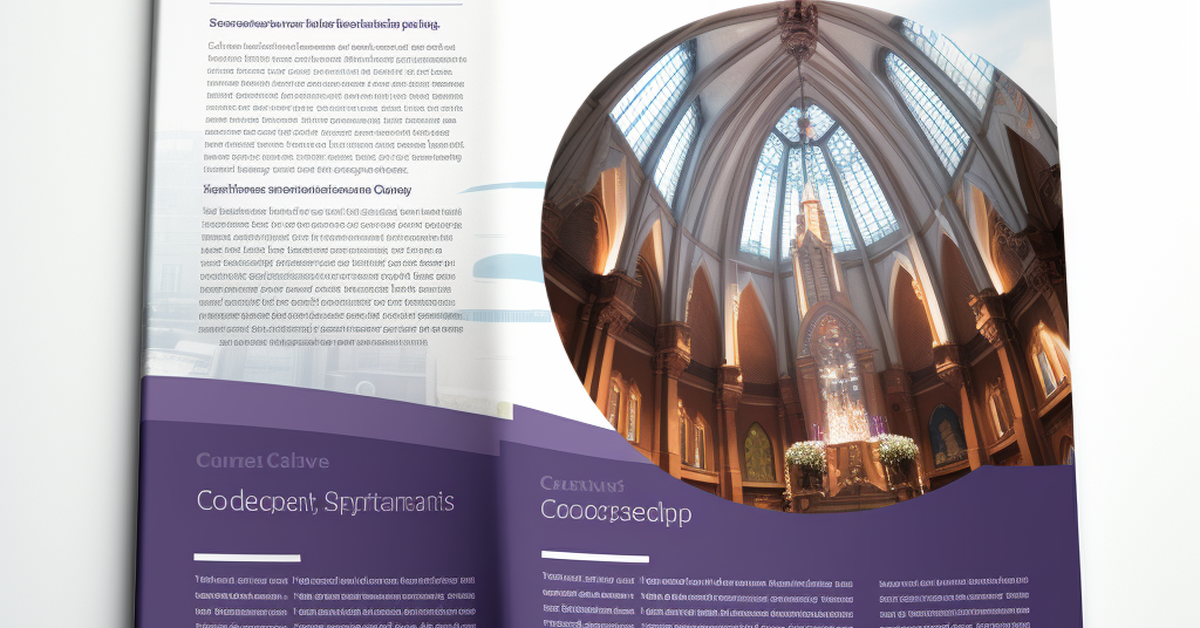When your church is poised to embark on a big project, a capital campaign can be the lifeline that turns vision into reality. A church capital campaign is a targeted fundraising effort designed to raise significant funds for a major project over a set period. Think of it as a marathon, not a sprint, requiring careful strategy and robust planning. Every church leader knows that to erect a new building, renovate a sacred space, or pay down debt, you must rally your flock around a shared goal. In this article, we’ll unpack the secrets behind orchestrating a fruitful church capital campaign that resonates with your congregation’s spirit and generosity.
Embarking on a capital campaign is no small feat. It calls for a deep understanding of your congregation’s capacity and willingness to give, alongside a clear presentation of the campaign’s purpose. Experience and expertise are paramount – much like a seasoned gardener knows the right season to plant, church leaders must identify the opportune moment to launch their campaign. This venture is steeped in a rich tapestry of tradition and modern savvy; it’s an intersection where longstanding faith meets the nitty-gritty of fundraising tactics. We delve into the nuances, from the initial idea spark to the meticulous crafting of materials that inspire giving.
As we steer towards the nub of what makes a church capital campaign tick, let’s consider the essential elements that contribute to its success. These components aren’t just cogs in a machine; they’re the chapters of a story, each with its own message and merit. In our next section, “What Is a Church Capital Campaign?”, expect a closer look at the inner workings of these campaigns. We’ll explore their anatomy, the lifeblood that sustains them, and the beating heart of community and faith that drives them forward. So, prepare to be equipped with the knowledge to inspire and engage your congregation in a mission that transcends mere brick and mortar.
What Is a Church Capital Campaign?

A church capital campaign stands as a focused effort by a congregation to raise substantial funds for a significant project within a set time frame. Such campaigns are often the springboards for growth, enabling churches to undertake expansive projects like building new facilities, refurbishing old ones, or paying down debts. They’re not just about collecting money, though; they can also unite the community and deepen faith commitments.
Churches embark on these journeys for various reasons. Perhaps a growing congregation requires a larger worship space, or an aged building needs urgent renovations. Sometimes, it’s about acquiring land for future expansion or establishing a fund for community outreach programs. Whatever the cause, capital campaigns can propel a church towards its vision for the future.
Benefits stretch beyond the tangible. A successful campaign fosters unity, strengthens faith, and boosts the church’s ability to serve. Here’s what can happen:
- Increased capacity for worship and community events
- Deeper engagement with the congregation through shared goals
- Enhanced outreach to the wider community
- Strengthened financial stability for the church
Planning Your Campaign
When considering a capital campaign, it’s crucial to have a blueprint – a plan that outlines every step. To begin, you’ll need a clear understanding of your goals. What do you wish to achieve? How much will it cost? Who will lead the charge?
Next, consider the timeline. A typical campaign might span one to three years, depending on the scale. It’s crucial to map out each phase, from quiet beginnings to the final push for pledges.
Engagement is key. Encourage involvement from the entire church body. This might include forming committees, hosting informational meetings, and ensuring everyone understands the why behind the campaign.
The Financials
Let’s talk numbers. Planning a campaign means being upfront about the costs. Here are some figures that might come into play:
- Average campaign duration: 1-3 years
- Common fundraising target: $500,000 – $5,000,000+
- Percentage of funds allocated to campaign expenses: 10-20%
These are just starting points. Your campaign’s specifics will depend on your church’s unique situation.
Leadership and Communication
No campaign thrives without robust leadership. Your team will need visionaries, strategists, and communicators. They’ll be the ones to carry your message to the congregation and beyond.
Speaking of communication, it’s vital. Throughout your campaign, maintain a clear and consistent message. Help people see the impact their contributions will make.
Table of Key Campaign Elements
| Element | Description |
|---|---|
| Goal Setting | Define what the campaign seeks to achieve financially and spiritually. |
| Leadership | Assemble a dedicated team to steer the campaign. |
| Communication Strategy | Develop a plan to keep the congregation informed and engaged. |
| Financial Planning | Outline the campaign budget, potential costs, and fundraising targets. |
| Timeline | Establish a clear timeline with milestones for fundraising phases. |
Looking Ahead
As we wrap up this introductory guide, think about what propels a church forward. It’s not just the funds raised, but the collective spirit of its members working towards a shared vision. Soon, we’ll delve into the initial steps to set your church on the path of a transformative capital campaign, ensuring its impact resonates for years to come.
Remember, Church Fundraising Materials is here to support your journey. With our expertise, we’ll help you craft materials that inspire action and reflect your church’s heart. For more insights, feel free to browse through our resources on Church Capital Campaign Planning. Together, let’s turn your vision into reality.
Stephen Lee, with extensive experience in aiding churches, sums it up best: “I’ve seen firsthand the power of a unified church body rallying towards a common goal. At Church Fundraising Materials, we’re dedicated to helping you convey your message in a way that resonates and inspires commitment. It’s about more than just raising funds; it’s about forging a path towards a brighter future for your church community.”
Why Plan a Church Capital Campaign?

Churches often find themselves at a crossroads where faith and practicality intersect. Capital campaigns are strategic undertakings. They’re not just about bricks and mortar; they’re about reaching higher, building community spirit, and creating spaces that enrich spiritual growth. Imagine your church with the means to welcome more members, reduce debt, or revamp a cherished but aging sanctuary. That’s the power of a well-executed capital campaign.
Motivations run deep when it comes to these campaigns. Some churches eye building projects, like a new family life center, as a beacon for growth. Others aim for debt relief to free up resources for ministry. A capital campaign can be the key that unlocks these aspirations. It’s not just about the funds; it’s about rallying the congregation around a common goal, strengthening bonds, and reaffirming commitment to the church’s mission.
But how does one translate this vision into action? It starts with understanding the impact. For instance, consider this: a typical campaign can raise three times the church’s current annual giving. That’s significant. It’s why planning is critical. You’ll want to lay out clear objectives, establish a timeline, and communicate your vision compellingly. Churches that align their campaign with their mission see results. They build more than structures; they build futures.
Community and spiritual growth are at the heart of these campaigns. They’re about more than just funds; they’re about fostering a sense of belonging and purpose. When church members invest in a campaign, they’re investing in their faith community. They’re saying, “We believe in our church’s future.” It’s a powerful statement that can lead to transformative outcomes.
Table 1: Church Capital Campaign Impact
| Aspect | Impact on Church |
|---|---|
| Building Projects | Expands facilities, invites growth |
| Debt Reduction | Frees up resources for ministry |
| Community Spirit | Strengthens bonds, increases engagement |
| Spiritual Growth | Deepens faith, encourages stewardship |
Remember, a successful campaign hinges on clear, consistent messaging. You want your materials to resonate. That’s where companies like Church Fundraising Materials come in. With years of experience crafting messages that stick, they’re the ally you need in this journey. They’ll help you convey your vision in a way that compels action and drives success.
As you look ahead, think about the next steps. With your campaign’s foundation laid, it’s time to consider the practicalities. There’s a roadmap that guides you through the complexities of a capital campaign. This roadmap ensures you’re ready to take on the challenges and opportunities that come with such a significant undertaking. It’s about preparation, strategy, and, above all, faith in your church’s potential.
For more insights on capital campaign planning, consider checking out resources like Church Capital Campaign Planning. They offer a wealth of knowledge that can help guide you through the process.
In conclusion, as you wrap up your plans for a capital campaign, reflect on the potential ripple effects. You’re not just raising funds; you’re nurturing a thriving community, poised for growth and spiritual enrichment. And as you move forward, remember, the journey doesn’t end here. It’s a continuous path toward building not just a structure, but a legacy for future generations.
How to Prepare for a Church Capital Campaign

Preparing for a church capital campaign is like planning a major event. It demands clear goals, dedicated leadership, and a timeline that guides your steps. Here’s how you can gear up for success.
Define Your Needs and Goals
Before you start, you need to know what you’re aiming for. Is it a new building? Maybe debt relief? Get specific about what you want to achieve. This clarity will guide your campaign and inspire your donors.
Engage Your Leaders
You can’t do this solo. Rally your church leaders and get them on board. Their support will be crucial as you move forward.
Talk to Your Congregation
Your church family should know what’s happening. Share your vision and invite their input. This builds ownership and excitement.
Craft a Timeline
Next, sketch out a timeline. This isn’t just a to-do list; it’s a roadmap. Include major milestones and deadlines to keep everyone on track.
List of Initial Steps:
- Pinpoint the campaign’s goal.
- Host meetings with church leaders.
- Communicate with the congregation.
- Develop a detailed timeline.
Table: Campaign Milestones
| Milestone | Description | Deadline |
|---|---|---|
| Vision Sharing | Introduce the campaign to the church | Month 1 |
| Commitment | Secure initial pledges from leaders | Month 2 |
| Public Launch | Announce the campaign to the congregation | Month 3 |
| Progress Updates | Share regular updates on funds raised | Monthly |
| Celebration | Recognize achievements and thank donors | End of Campaign |
With these foundational steps in place, you’re well on your way. Remember, every journey starts with a single step, and a capital campaign is no different. Once you’ve laid the groundwork, you’ll find yourself ready to tackle the key steps in planning. You’ll dive into crafting a compelling message, creating engaging materials, and strategizing to reach your financial targets. The road to achieving your church’s vision is paved with careful planning and collective effort.
For more insights and resources on church capital campaigns, feel free to explore Church Fundraising Materials, which offers a wealth of knowledge and services tailored to support your mission. With over 600 clients served, including churches and Christian schools, you’ll find the expertise and inspiration you need to succeed.
Key Steps in Church Capital Campaign Planning

When you’re ready to ignite change and make big things happen for your church, a capital campaign is a powerful tool. Think of it as a catalyst for spiritual and financial growth. But kicking off such an endeavor requires thoughtful planning and a heart full of faith. Here’s how you can lay the groundwork for a transformative church capital campaign.
Start with a Vision
Your campaign begins with a vision that fires up the congregation. What’s the dream? Maybe it’s a new community center, renovations, or clearing debt. Whatever it is, make it clear. Paint a picture of the future that everyone can see and yearn for.
Team Up
Gather a team that’s as passionate about the project as you are. Include folks with various talents, from inspiring speakers to number crunchers. Together, you’ll form the backbone of the campaign, steering it toward success.
Seek Wisdom
Sometimes, you need an outside eye. Consider enlisting a capital campaign consultant. They bring experience and can spot potential pitfalls before they happen, guiding your church to triumph.
Get the Facts
Conduct a feasibility study. It’s like taking the pulse of your community to see if the timing’s right. Are your people ready to give? Are there enough resources? This step can save you from heartache down the line.
Spread the Word
Now, get the word out. Create materials that sing your vision from the rooftops. Brochures, videos, letters – the works. Make sure they look sharp and professional; they’re the ambassadors of your cause.
Plan the Ask
Next comes the ask. Plan how you’ll approach donors, both big and small. Everyone’s contribution matters. Lay out your strategy with respect and gratitude.
Celebrate Every Step
As funds roll in, celebrate! Each donation is a step closer to your goal. And don’t forget to say thanks. A grateful heart is the cornerstone of a successful campaign.
Table: Church Capital Campaign Planning at a Glance
| Stage | Description | Importance |
|---|---|---|
| Vision | Define the project and its impact on the community. | Essential |
| Team Building | Assemble a diverse group to lead the campaign. | Crucial |
| Consultant Engagement | Seek professional advice for strategy and planning. | Highly Valuable |
| Feasibility Study | Assess community readiness and financial capacity. | Critical |
| Communication Strategy | Develop materials to share the vision and progress. | Key Component |
| Donor Engagement | Create a plan to approach and thank donors. | Vital |
| Stewardship Plans | Ensure responsible management and reporting of funds. | Fundamental |
Tally the Costs
Don’t forget the practical stuff. Budget for your campaign. From printing costs to event expenses, it all adds up. Keep track and stay transparent. Your donors trust you to use their gifts wisely.
Lead with Heart
Above all, lead with heart. Your enthusiasm will be infectious. As you rally your church around this shared goal, watch as the excitement builds and your vision starts to take shape.
As you embark on this journey, remember, a well-laid plan is your roadmap to success. And success in this endeavor means more than just hitting a financial target; it’s about bringing your church community closer, strengthening your faith, and achieving something remarkable together.
Now, as we prepare to tie up the loose ends of our planning, we must also consider what pitfalls might lie ahead. It’s wise to be aware of common missteps that could hinder the progress of your campaign. By staying vigilant and proactive, we can navigate through these challenges and keep our focus on the ultimate goal—transforming our church and enriching our community.
Remember, every great achievement begins with a plan. And with the right guidance and a prayerful approach, your church capital campaign can soar to new heights.
Common Mistakes to Avoid in Capital Campaigns

Embarking on a church capital campaign can be a momentous journey. It’s a chance to galvanize your community toward a shared vision. Yet, without careful navigation, it’s easy to veer off course. Let’s talk about some common slip-ups and how to sidestep these potential stumbling blocks.
Mistake: Vague Goals
A capital campaign without clear, specific goals is like a ship without a rudder. It’s essential to define what you’re aiming for. Say you’re aiming for more than just “raising funds”. Are you looking to build a new community center? Or perhaps you’re expanding the church school? Pinpoint your goals.
Mistake: Skipping the Homework
You wouldn’t build a house without a blueprint. Likewise, a capital campaign requires thorough planning. This means doing a feasibility study to gauge support and understand the financial landscape. Skipping this step can lead to unrealistic goals or overlooked opportunities. For insights on the importance of feasibility studies, check out this resource.
Mistake: Underestimating the Timeline
Capital campaigns aren’t sprints; they’re marathons. Rushing can lead to burnout and donor fatigue. Set a realistic timeline that allows for planning, engaging donors, and celebrating milestones. For a detailed look at creating an effective timeline, visit Church Fundraising Materials.
Mistake: Inadequate Communication
Donors can’t read minds. Regular, clear communication is critical. Share progress, celebrate successes, and be transparent about challenges. This builds trust and keeps the momentum going.
Mistake: Lack of Leadership Involvement
A leaderless campaign is a rudderless ship. Ensure your leadership team is involved and visible. Their engagement can inspire others to follow suit.
Mistake: Overlooking the Follow-Through
The end of the campaign isn’t just about reaching a financial goal. It’s also about honoring commitments and showing gratitude. Donors remember how you close the loop. Make it memorable for the right reasons.
Avoiding Pitfalls: A Checklist
- Define specific goals.
- Conduct a feasibility study.
- Set a realistic timeline.
- Maintain clear communication.
- Ensure leadership involvement.
- Plan for follow-through.
Remember, every campaign is unique. Tailor your approach to fit your church’s specific context and needs.
The Cost of Getting It Wrong
Mistakes in capital campaigns can be costly. Not just in dollars, but in trust and morale. Here’s a quick glance at potential consequences:
| Mistake | Potential Impact |
|---|---|
| Vague Goals | Confusion and lack of donor engagement |
| Skipped Planning | Unrealistic goals and missed opportunities |
| Rushed Timing | Burnout and donor fatigue |
| Poor Communication | Erosion of trust and support |
| Absent Leadership | Lack of direction and inspiration |
| Neglected Closure | Damaged relationships and lost future support |
By dodging these pitfalls, your church can forge a path to a fruitful campaign. If you’re pondering the essential steps involved in planning a church capital campaign, or how to develop a fundraising strategy, these FAQs will guide you.
As you move forward, consider the expertise of Church Fundraising Materials. With over 600 clients served, including churches and Christian schools, they know the ins and outs of facilitating successful fundraising efforts.
Stephen Lee, who has been at the helm of numerous campaigns, emphasizes the significance of well-crafted materials. “I help organizations visually communicate their vision or brand in a consistent and compelling manner that will resonate deeply with their target audience,” he says. This expertise is crucial whether you’re raising capital funds or increasing brand awareness.
In closing, let’s look ahead. Imagine the impact of a well-run campaign: a new building rising, a community strengthened, a vision realized. The journey toward this future begins with smart planning and sidestepping common missteps. Ready to take the next step? Let’s talk about how to rally your church community and secure the resources needed to bring your vision to life.
Conducting a Successful Church Capital Campaign

Launching a Church Capital Campaign is no small feat. It requires strategic planning, robust communication, and active involvement from both leaders and volunteers. Here’s how you can ensure your church’s capital campaign achieves its goals.
Leadership and Volunteer Mobilization
A successful campaign starts with strong leadership. You’ll need a dedicated team that’s passionate about the church’s vision. This group should reflect diverse skills and be ready to take on various responsibilities.
Key Roles for Your Team:
– Campaign Director: Oversees the entire campaign.
– Communications Leader: Manages how the campaign is presented.
– Volunteer Coordinator: Recruits and organizes volunteer efforts.
Getting the right people on board is crucial. You want individuals who can inspire and motivate others. Once your leadership team is in place, focus on mobilizing volunteers. They are the backbone of any campaign, helping to spread the word and encourage buy-in from the wider congregation.
Offer training sessions for volunteers. Teach them how to share the campaign’s purpose with enthusiasm and accuracy. Remember, well-informed volunteers become your campaign’s most effective advocates.
Effective Communication with the Congregation
Communication is the heartbeat of your campaign. Keep your congregation in the loop about why funds are needed and how they will be used. Craft a clear, compelling narrative that connects with your members’ values.
Components of Effective Campaign Communication:
– Vision Statements: Clarify the purpose and impact of the campaign.
– Regular Updates: Share progress and celebrate milestones.
– Testimonials: Feature stories of individuals who support the campaign.
Utilize various platforms to reach your audience. This can include Sunday announcements, email newsletters, and social media posts. Tailor your message to each platform for maximum impact.
Progress Monitoring and Momentum Maintenance
Tracking your campaign’s progress is essential. You want to know if you’re on track to meet your goals. Use a simple, transparent system to report on funds raised and how they’re being allocated.
Example of a Campaign Progress Table:
| Week | Funds Raised | Goal | Percentage of Goal Met |
|---|---|---|---|
| 1 | $10,000 | $50,000 | 20% |
| 2 | $20,000 | $50,000 | 40% |
| 3 | $35,000 | $50,000 | 70% |
| 4 | $50,000 | $50,000 | 100% |
Maintaining momentum can be challenging. Keep the congregation engaged with regular, exciting updates. Celebrate every victory, no matter how small. Use visual aids, like progress thermometers, to make the campaign’s progress tangible and visible to all.
As you approach the end of your capital campaign, it’s vital to start thinking ahead. Consider the lasting impact of your collective efforts. Reflect on the journey and the many hands that made it possible.
Remember, the conclusion of one campaign is often the beginning of another phase of growth. Together, you’ve laid a foundation for future projects and continued stewardship. Take a moment to envision the next steps toward your church’s brighter future, a path paved with the commitment and generosity of your community.
Following Up After a Church Capital Campaign

After the fervent work of a Church Capital Campaign, it’s time to look ahead. You’ve rallied your community and the donations are in. Now, what comes next? Let’s tackle this with care.
Expressing Thanks and Sharing Results
First things first, say thank you. Your supporters need to feel valued. They’ve put their trust and hard-earned money into your vision. A personalized thank you note can touch hearts, and don’t shy away from public acknowledgment during services or on your social media.
Next, share the outcomes. Transparency breeds trust. Let donors know the exact impact of their generosity. Did you hit your fundraising goal? What portion of the project can now be completed? Use visuals, like pie charts or infographics, to show where every dollar is going.
Managing Funds and Project Implementation
Your leadership team must handle the funds with integrity. Here’s a simple breakdown:
- Total Raised: $500,000
- Allocated to Building: $300,000 (60%)
- Allocated to Outreach: $100,000 (20%)
- Reserved for Maintenance: $100,000 (20%)
| Project Phase | Status | Notes |
|---|---|---|
| Planning | Completed | Architectural plans approved |
| Construction | In Progress | Completion expected in 9 months |
| Outreach Expansion | Scheduled | Launching new programs in Fall |
| Maintenance Fund | Established | Ensuring long-term care |
Ongoing Engagement with Donors
Last but not least, keep the conversation going. Your donors aren’t ATMs; they’re partners in your ministry. Organize update meetings, send regular newsletters, or consider a donor appreciation event.
Remember, this campaign might be over, but the journey continues. As we look forward, we keep the spirit of giving alive, fostering a community that supports not just a building, but a shared mission.
Stephen Lee, with vast experience in aiding over 600 churches, stands by the belief that following up with gratitude and clear communication is essential. It’s not just about reaching financial goals; it’s about building lasting relationships that will flourish long after the campaign has concluded.
To learn more about planning your next steps, consider reading up on Church Capital Campaign Planning, where you can find additional insights and guidance.
Conclusion
We’ve journeyed through the essentials of Church Capital Campaign Planning, and it’s clear that the path to success is paved with meticulous strategy and heartfelt storytelling. Our mission is to empower your church with materials that not only capture the essence of your vision but also inspire your congregation to invest wholeheartedly in the growth of your community. I, Stephen Lee, have witnessed the transformative power of well-crafted campaigns which have propelled over 600 churches towards their fundraising goals.
Think of us not just as a provider but as your creative ally in this endeavor. At Church Fundraising Materials, we meld design expertise with a passion for faith-based initiatives. Our tailored solutions are not simply about raising capital; they’re about nurturing a legacy. We’re ready to amplify your message with compelling designs that resonate and inspire action.
Key Takeaway
Your church capital campaign can soar to new heights with the right support. Remember that every detail counts—from the words on a pledge card to the colors of a brochure. Now is the moment to kickstart a campaign that will echo through your church halls and beyond. Dial (678) 820-3177 or reach out through our website to begin crafting materials that will leave a lasting impression and turn your vision into a tangible reality. Let’s create something remarkable together, for a future that reflects the true spirit of your mission.
Frequently Asked Questions about Church Capital Campaign Planning
What is a church capital campaign?
A church capital campaign is a dedicated fundraising effort designed to raise significant amounts of money for specific projects or needs within a church. These projects often include building renovations, construction of new facilities, debt reduction, or endowment building. Unlike regular tithing or offerings, a capital campaign seeks larger, one-time contributions and pledges spread over a set period.
How long does a typical church capital campaign last?
The length of a church capital campaign can vary depending on the goals and size of the project. Generally, campaigns can last from one to three years, from the initial planning phase to the collection of the final pledged funds. During this time, the campaign will include periods of preparation, communication, solicitation, and follow-up.
What are the key phases of a church capital campaign?
The key phases of a church capital campaign typically include the following:
1. Visioning and Goal Setting: Establishing clear objectives and the purpose of the campaign.
2. Feasibility Study: Assessing the congregation’s readiness and potential support.
3. Planning: Creating a detailed plan, including timelines, materials, and team roles.
4. Leadership Recruitment: Identifying and training campaign leaders and volunteers.
5. Quiet Phase: Securing initial gifts from major donors before the public launch.
6. Public Phase: Launching the campaign to the entire congregation and community.
7. Follow-Up: Collecting pledges, recognizing donors, and reporting on progress.
How do we determine the financial goal for our campaign?
Determining the financial goal for a church capital campaign typically involves several steps. First, assess the cost of the project or need, including all associated expenses. Next, conduct a feasibility study to gauge the giving capacity and willingness of the congregation and potential major donors. Consider also any savings, grants, or loans that could contribute to the project. Combining these factors will help establish a realistic financial goal.
Should we hire a consultant to help with our church capital campaign?
Hiring a consultant can be beneficial, especially if your church lacks experience in managing capital campaigns. A consultant brings expertise, can help maintain objectivity, provide proven strategies, and keep the campaign on track. However, hiring a consultant also means budgeting for their fees. Weigh the potential benefits against the cost before making a decision.
How can we engage the congregation in the capital campaign?
Engaging the congregation in a capital campaign can be achieved by:
– Sharing the vision and how it aligns with the church’s mission.
– Involving members in the planning and decision-making process.
– Providing regular updates and testimonials about the campaign’s impact.
– Creating opportunities for members to contribute their time, skills, and resources.
– Celebrating milestones and expressing gratitude for contributions.
What are some common challenges in church capital campaigns?
Common challenges include:
– Setting unrealistic goals without proper assessment.
– Inadequate communication leading to confusion or lack of interest.
– Donor fatigue, especially if the church has had multiple recent fundraising efforts.
– Insufficient volunteer support or leadership.
– Economic downturns affecting donors’ ability to give.
How important is the role of the church leadership in a capital campaign?
Church leadership plays a crucial role in the success of a capital campaign. Leaders are responsible for casting the vision, motivating the congregation, and leading by example in giving. They also manage the campaign’s organization and ensure that all activities align with the church’s broader mission and values.
What are some effective ways to communicate about our capital campaign?
Effective communication methods include:
– Personalized letters and face-to-face conversations.
– Presentations during services and church events.
– Regular updates through newsletters, emails, and social media.
– Informational brochures and campaign materials.
– Testimonies from members who are passionate about the project.
How do we maintain momentum during the capital campaign?
Maintaining momentum can be achieved by:
– Celebrating early successes and milestone achievements.
– Keeping the congregation informed and engaged through regular updates.
– Encouraging ongoing involvement with volunteer opportunities.
– Hosting special events to keep excitement levels high.
– Continuously reminding the congregation of the campaign’s purpose and progress.

